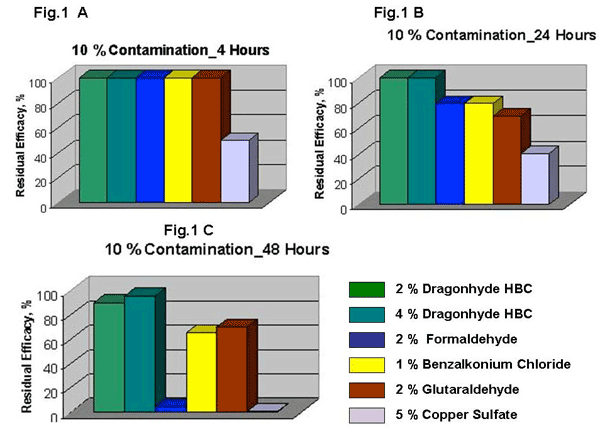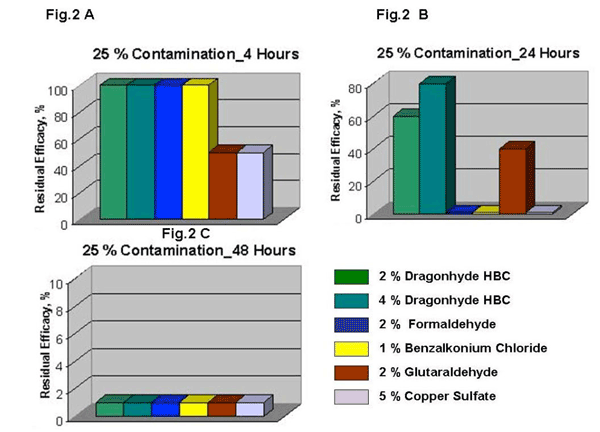
By Irina Grigorian, PhD
Department of Life Sciences, Hydromer Inc. Branchburg, NJ
Dairy cow lameness is a major concern for many farms, leading not only to animal suffering but also to financial loss in dairy farm operations. Lameness is caused by different anaerobic and aerobic bacteria and can be effectively treated with antibiotics. Farmers know that it is better to prevent a highly contagious disease, rather than treat the whole herd with high cost antibiotics. One of the most common and effective methods of prevention is a hoof bath. The hoof bath solutions usually contain one or a mixture of chemicals known to have antimicrobial properties.
Intensive research and close work with different farms show that hoof baths will be effective if properly supervised. What does it mean? If we want the hoof bath to maintain its hygiene effect, we need to keep the hoof bath clean and use effective ingredients. As the organic load (mixture of manure, urine and dirt) in the hoof bath increases, its effectiveness decreases. Such improper supervision of the bath could result in more damage than good.
We studied the efficacy of hoof baths in the presence of various contaminations. We decided to mimic the farm conditions in the lab by comparing antimicrobial efficacy of the solutions made with generally used hoof bath actives like Copper Sulfate, Formaldehyde, Glutaraldehyde and Benzalkonium Chloride - along with a 2% and 4 % solution of T-HEXX Dragonhyde Hoof Bath Concentrate (Dragonhyde HBC, manufactured by Hydromer Inc). Prepared solutions were contaminated with fresh cow manure obtained from a farm located near Branchburg, NJ. Contamination was as followed: 10%, 25% and 50 % by weight. The antimicrobial strength of the solutions were determined using the methodology developed in house for testing the efficacy of bactericidal agents against common microorganisms causing digital dermatitis, foot rot and foot warts (Vicario, P. et al., 2009, J. Vet. Medicine and Animal Health).
Not every hoof bath is equal in farm conditions
Fig.1-3 shows bar charts for different chemical solutions at various times after contamination (4-48 hours). We also compared the efficacy of selected hoof bath solutions at different levels of contaminations - from 10% to 50%.
As shown in Fig.1A, during the first 4 hours of organic contamination, 5 % Copper Sulphate solution lost more than 50 % of its efficacy. There was no reduction of the efficacy in all other hoof bath solutions. However after 48 hours of 10 % organic contamination, 2 % Formaldehyde solution as well as 5 % Copper Sulphate lost their efficacy completely (Fig.1C).

As the time or amount of contamination increased, the efficacy of the solutions showed even more variability. As seen in Fig. 2B, only two hoof bath solutions, T-HEXX Dragonhyde HBC and Glutaraldehyde survived 25 % of contamination in 24 hours, although Glutaraldehyde efficacy declined below 50%.
However, after 48 hours all hoof bath solutions became ineffective (Fig. 2C).

When the contamination level with dirt or manure reached 50% only two solutions, Dragonhyde HBC and 1 % Benzalkonium Chloride, held its residual efficacy for the first 4 hours (Fig. 3A). However, after 24 hours,
all solutions completely lost their efficacy (Fig.3B).

Based on the data presented above, it can be concluded, that no matter which active ingredient you choose, if the hoof bath is not maintained properly (meaning not changed often enough to preserve the strength of the active ingredients), the hoof treatment will be ineffective and can increase the reinfection rate
Golden rules for a successful hoof bathing is in the right choice of chemical solution and proper management of the bath
As concluded by our observations, different hoof bath actives behave differently -not only when the conditions are optimal (which rarely happens in a farm environment), but it is aggravated when the hoof bath is contaminated with an organic load. Therefore, selection of the right chemical agents for the hoof bath becomes an important decision for the farmer.
Observation made by the current study shows that the most popular agents for hoof bath, Copper Sulfate and Formaldehyde lost its efficacy within 4 hours after being contaminated with 10% and 25 % of organic load respectively.
In addition, both Copper Sulfate and Formaldehyde have many environmental and safety issues. Copper Sulfate is classified by the US environmental protection agency as toxicity class 1 highly toxic. A major concern with Copper Sulfate usage in a hoof bath is that Copper builds up in the soil. Formaldehyde is listed as a chemical of high concern, due to its high toxicity to both humans and animals - as well as for aquatic organisms (National Toxicology Program 2010). Moreover, several scientific and field data questions the general efficacy of Copper Sulfate and Formaldehyde hoof baths (Speijers, M.H. et al, 2010).
THEXX Dragonhyde HBC is an excellent alternative to Copper Sulfate and Formaldehyde
Among the solutions that showed relatively strong efficacy under farm conditions are THEXX Dragonhyde HBC and 1 % Benzalkonium Chloride. Benzalkonium Chloride is a very well known biocide, preservative and surfactant, but it is not widely used in hoof baths. However, as can be seen from this study, Dragonhyde HBC holds antimicrobial efficacy at 24 hours in contamination with organic matter and therefore may be a good alternative to widely used Copper Sulphate and Formaldehyde.
Acknowledgments
Author thanks M.Dyck and J.Konar for valuable help in manuscript preparation.
References
National Toxicology Program (NTP).Final Report on Carcinogens Background Document for Formaldehyde. Rep Carcinog Backgr Doc. 2010 Jan;(10-5981):i-512.
Speijers MH, Baird LG, Finney GA, McBride J, Kilpatrick DJ, Logue DN, O'Connell NE. Effectiveness of different footbath solutions in the treatment of digital dermatitis in dairy cows. 2010, J Dairy Sci. 2010 Dec; 93(12):5782-91.
Vicario P.V., Grigorian, I.A, Pascoe, J. A rapid method for the testing the efficacy of teat dips formulations as bactericidal agents for the control of bovine mastitis. J.Vet.Medicine and Animal health. 2009: 1, 001-004.
6.19.2012